Wife of Declaration of Independence Signer Benjamin Rush
Julia Stockton was born March 2, 1759, at Morven, the family estate near Princeton, New Jersey. She was the eldest daughter of signer Richard Stockton and poet Annis Boudinot Stockton. Julia received as liberal an education as was open to women of her day, supplemented by her association with the cultivated people whom her father and mother gathered in their home. The daughter of a lawyer and trustee of the College of New Jersey, Julia grew up in a home where her father’s library was reputed to be among the best in the colonies.
Julia Stockton Rush
Painted by Charles Willson Peale in 1776, around the time of her marriage, the portrait depicts a serene and intelligent woman relaxing while playing her elegant English guitar with her books beside her. Both Julia’s father, Richard Stockton, and husband, Dr. Benjamin Rush, were members of the Continental Congress and signers of the Declaration of Independence.
Benjamin Rush was born on December 24, 1745, to John Rush and Susanna Hall Rush in the Township of Byberry, about fourteen miles outside Philadelphia. His father died when he was six, leaving his mother Susanna the sole support of the family. She opened a grocery; was so successful that she soon opened another shop selling chinaware.
At the age of nine, Benjamin was sent to Nottingham Academy in Maryland, which was run by his maternal uncle, the Reverend Samuel Finley.
In 1760, he completed the five-year program at the College of New Jersey (now Princeton University), earning a Bachelor of Arts degree. Rush then studied medicine under Dr. John Redman in Philadelphia for six years. Redman encouraged Rush to further his studies at the University of Edinburgh, where he earned a Doctor of Medicine degree in 1768.
While in Edinburgh, he helped his friend Richard Stockton convince Dr. John Witherspoon to accept the presidency of the College of New Jersey. Rush attended lectures in England and in Paris, where he enjoyed the friendship of Benjamin Franklin, who advanced money to pay Rush’s expenses.
In August 1769, at the age of 24, Rush returned to America, opened a medical practice in Philadelphia, and became the most famous American physician and medical teacher of his generation. He also was appointed Professor of Chemistry at the College of Philadelphia.
Dr. Rush practiced medicine extensively among the poor. His practice was successful; his classes at the university were popular. He began to engage in writing that would prove to be of considerable importance to the emerging nation. He also published the first American textbook on Chemistry.
In 1773, Rush contributed editorial essays to the papers about the Patriot cause. He was active in the Sons of Liberty in Philadelphia during that time. He suggested the title, Common Sense, to his friend Thomas Paine for a pamphlet that became popular among patriots.
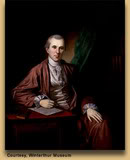
Dr. Benjamin Rush
By Charles Willson Peale (1783)
Dr. Rush became engaged to Sarah Eve, but she died of tuberculosis on December 4, 1774, two weeks before their scheduled wedding. The following year, he became engaged to Julia Stockton, whose family he knew during his undergraduate days at Princeton. During their engagement year, Rush wrote frequently to Julia describing his daily activities and professing his love. He wrote, “I desire no other happiness than heaven and you.”
On January 11, 1776, Dr. Benjamin Rush married Julia Stockton, the 17 year old daughter of his good friend Richard Stockton of Princeton. The minister who married them was Dr. John Witherspoon, whom he had helped bring to America ten years earlier. Six months later, all three men would sign the Declaration of Independence.
Thirteen children were born to Julia and Benjamin Rush and nine reached adulthood: John, Anne, Richard, Mary, James, Benjamin, Julia, Samuel, and William.
In June 1776, Rush was appointed to represent Philadelphia at the Continental Congress, and took his seat on July 22, 1776. He was not there on July 4 when independence was declared, but he proudly signed the Declaration of Independence with the other delegates on August 2, 1776.
Rush later wrote in letter to John Adams: “The pensive and awful silence which pervaded the house when we were called up, one after another, to the table of the President of Congress to subscribe what was believed by many at that time to be our own death warrants.”
Rush had many long lunches with Jefferson, Adams, and Franklin and began a lifelong friendship with John and Abigail Adams.
When Dr. Benjamin Rush learned of the capture and brutal prison treatment his father-in-law, Richard Stockton, had received at the hands of the Loyalists and British in 1777, he was incensed. He wrote to Richard Henry Lee: “Every particle of my blood is electrified with revenge, and if justice cannot be done him in any other way, I declare I will, in defiance of the authority of Congress… drive the first rascally Tory I meet a hundred miles, barefooted, through the first deep snow that falls in our country.”
![]()
Benjamin Rush Signature
On the Declaration of Independence
In April 1777, Rush was appointed by Congress to the post of Surgeon General of the Middle Department of the Continental Army, which included the hospitals between the Hudson and Potomac Rivers. Rush immediately went to work, and authored Directions for Preserving the Health of Soldiers, which the War Department ordered printed as a pamphlet. This code of military hygiene was to serve our armies as late as the Civil War.
Among many recommendations were flannel shirts next to the skin as a protection from intermittent fever; short hair cuts with frequent combing to combat lice; a largely vegetarian diet; water with vinegar added as a substitute for fortified wines; cleanliness of person, linen, and bedding; encampments were to be kept free from human and animal excrement. Dr. Rush also found that in the area under his command, farmers would take in wounded soldiers, if they could receive the soldier’s meat ration and the army would buy their dairy products.
Julia Stockton Rush was, along with Sarah Franklin Bache and other prominent women, a member of the Ladies Association, the leading fund raiser during the Revolutionary War. Esther De Berdt Reed established the organization in Philadelphia after General George Washington relayed information to Congress about the shortage of supplies and rations among the Continental soldiers. The women of Philadelphia sewed 2,200 linen shirts and personalized each one with the name of the woman who made it.
As the war continued and Army forces under General Washington suffered a series of defeats, Rush secretly campaigned for removal of Washington as commander of the Continental Army, as part of the secretive Conway Cabal. He went so far as to write a supposedly anonymous letter to then Governor Patrick Henry of Virginia. Rush was caught in the act and confronted by Washington, at which point he bowed out of any activities related to the war.
Rush later expressed regret for his actions against George Washington. In a letter to John Adams in 1812, Rush wrote, “He [Washington] was the highly favored instrument whose patriotism and name contributed greatly to the establishment of the independence of the United States.”
After the Revolution
In 1783, Rush was appointed to the staff of Pennsylvania Hospital, where he remained a member until his death. A pioneer in the study and treatment of mental illness, Rush insisted that the insane had a right to be treated with respect. He protested the inhuman treatment of the insane at Pennsylvania Hospital. When he received an inadequate response to his complaints from the hospital’s Board of Managers, Rush took his case to the public at large. In 1792, he was successful in getting state funding for a ward for the insane.
Rush’s son John became a patient in the new psychiatric wing that his father had worked to establish; John Rush would remain there for the rest of his life. The year before he died, Rush published Medical Inquiries and Observations upon the Diseases of the Mind, the first textbook on psychiatry in America.
In 1789, Rush wrote articles in Philadelphia newspapers in favor of adopting the Federal Constitution, and was then elected to the Pennsylvania convention that ratified the constitution. He was also appointed treasurer of the United States Mint under President John Adams, where he served from 1797 to 1813. He helped found Dickinson College and served as a trustee.
Dr. Rush became Professor of Medical Theory and Clinical Practice at the University of Pennsylvania in 1791, though the quality of his medicine was quite primitive even for the time: he advocated bleeding. Even when the practice began to decline, he refused to reconsider the dangers of it. When Rush began teaching at the University he had a class of twenty students; when he delivered his last lectures in l813, he had more than four hundred students.
Dr. Rush was beloved in his city, where he set an example for other doctors in caring for the poor and became world famous because of his dedication to duty during Philadelphia’s two great yellow fever epidemics that killed nearly 8,000. He was honored for his contributions to medical science by medals and presents from the King of Prussia, Queen of Italy, and Czar of Russia.
Rush was also a social activist, a prominent advocate for the abolition of slavery, an advocate for scientific education for the masses, including women, and for public medical clinics to treat the poor. He called for the restriction of alcohol and tobacco use, proposed the study of veterinary medicine, and wrote the first American textbook on psychiatry.
In 1803, Thomas Jefferson sent Meriwether Lewis to Philadelphi to prepare for the Lewis and Clark Expedition under the tutelage of Rush, who taught Lewis about frontier illnesses. Rush provided the corps with a medical kit that included: Turkish opium for nervousness; emetics to induce vomiting; medicinal wine; fifty dozen of Dr. Rush’s Bilious Pills, laxatives containing more than 50% mercury, which the corps called “thunderclappers.”
Despite his great contributions to early American society, Rush may be more famous today as the man who, in 1812, helped reconcile the friendship of Thomas Jefferson and John Adams by encouraging the two former Presidents to resume writing to each other.
While serving the people of Philadelphia during a typhus epidemic, Dr. Benjamin Rush suffered a severe attack of typhus.
Dr. Benjamin Rush died suddenly on April 19, 1813, after a brief illness. He was buried in the graveyard of Christ’s Church in Philadelphia, the same church whose pastor had christened him 67 years earlier.
On learning of his death Jefferson wrote to Adams:
Another of our friends of seventy-six is gone, my dear Sir, another of the co-signers of the Independence of our country. And a better man than Rush could not have left us, more benevolent, more learned, of finer genius, or more honest.
Adams, grief-stricken, wrote in reply, “I know of no Character living or dead, who has done more real good in America.”
Rush’s biographies and autobiography portray him as a strong-willed, opinionated man, but with kindly and philanthropic ways—a man of integrity who was devoted to his family.
Julia Stockton Rush died at their country home, Sydenham, on July 7, 1848, at the age of 89, and was buried with her husband in Christ Church Burial Ground in Philadelphia.
Tributes to Julia Stockton Rush:
In his memoirs, Dr. Rush paid this tribute to his wife:
Let me here bear testimony to the worth of this excellent woman. She fulfilled every duty as a wife, mother, and mistress with fidelity and integrity. To me she was always a sincere and honest friend; had I yielded to her advice upon many occasions, I should have known less distress from various causes in my journey through life… May God reward and bless her with an easy and peaceful old age if she should survive me, and after death confer upon her immediate and eternal happiness.
A footnote in Rush’s autobiography says, “She raised her family in a time of war, pestilence, and great economic stress; she had little time for anything but the care of her family. It is evident that she was a sensible, calm woman upon whom [Rush] depended for solace and stabilizing advice.” The year before his death, Rush wrote a poem to Julia that ended, “and when the stream of time shall end, and the last trump my grave shall rend, who shall with me to heaven ascend, my Julia.”
Julia’s great-grandson wrote:
“I am afraid our forebears did not keep with accuracy the deeds of noble women in the days that truly tried the souls of both men and women. I spent last evening going over a mass of data, including a copy of the Commonplace Book or diary of my great-grandfather Benjamin Rush. She is spoken of everywhere as a devoted wife and mother, and of her urging her husband to take more care of himself during the terrible yellow-fever scourge of 1793 in Philadelphia, when, much against her wishes, she remained out of town with her children, yet by daily letters encouraged Dr. Rush in his great work for humanity.”
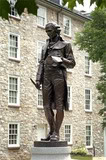
Dr. Benjamin Rush Monument
Dickinson College
Carlisle, Pennsylvania
Benjamin Rush, a prominent Philadelphia physician, prepared the charter for Dickinson College in 1783. A grammar school founded in Carlisle in 1773 served as the foundation of the new college. In many ways, Benjamin Rush was a man before his time. He was an outspoken opponent of slavery, a vocal proponent of equal education for women, a supporter of the rights of the mentally challenged, and a generous provider of health care to the indigent in Philadelphia.
SOURCES
Benjamin Rush
Julia Stockton Rush
Benjamin Rush (1745-1813)
Wikipedia: Benjamin Rush
The Papers of Benjamin Rush
Signer of the Declaration of Independence
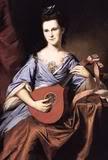
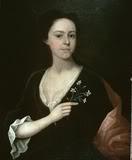
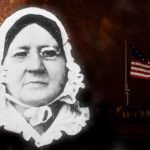
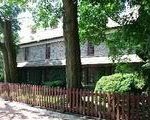
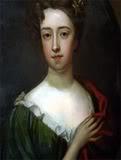

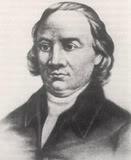
Thank you.
I so needed inspiration upon rising this morning.
A I was given Benjamin and Julia Rush.
Thank you.
Thank you as I’m a descendent of dr Benjamin Rush and his wife Julia Stockton. No everyone has two descendents who signed the DOI.